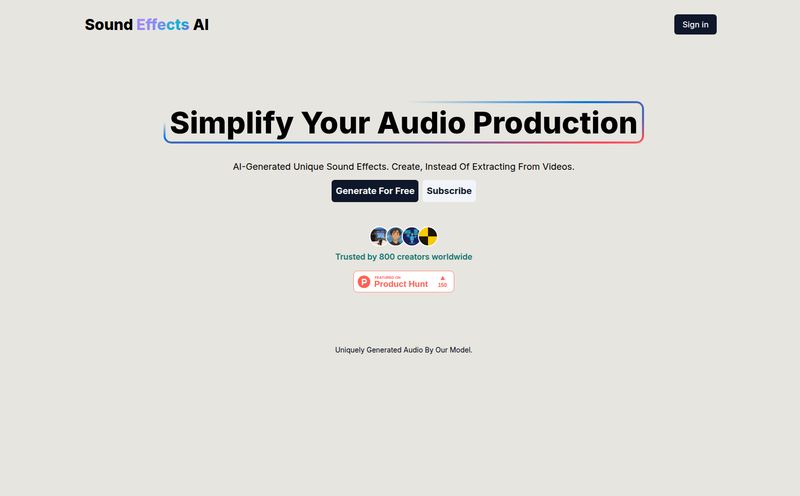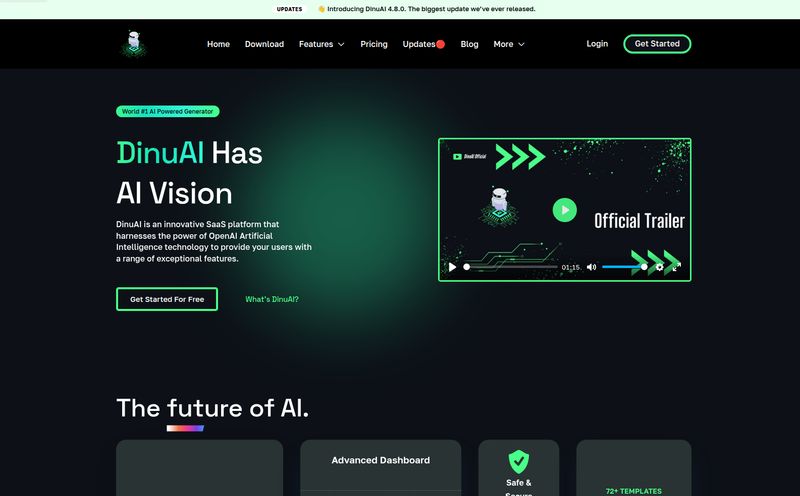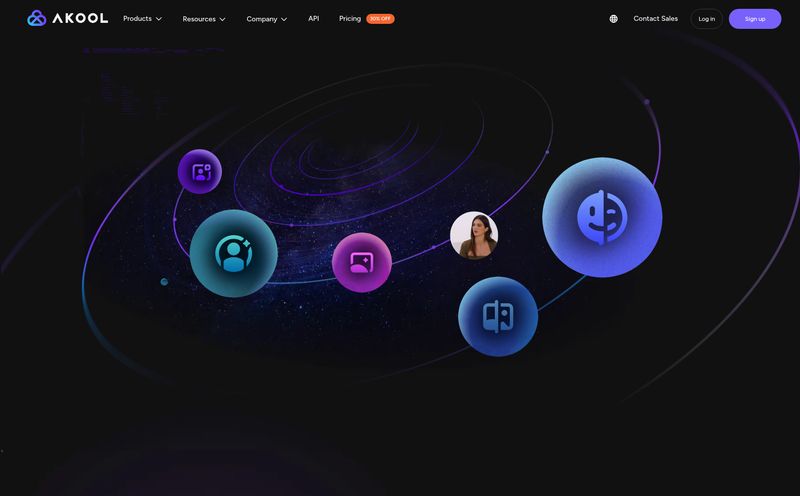I’ve spent more hours of my life staring at an Adobe Premiere timeline than I’d care to admit. Zooming in, finding the exact millisecond to slice out an “um,” nudging audio clips, layering B-roll… it’s a process. A powerful, creative process, sure, but also a tedious one. For years, it was just the cost of doing business if you wanted to produce high-quality video or audio content.
Then I kept hearing whispers in creator circles about a tool called Descript. The pitch sounded almost ridiculous: “You edit the video by editing the text.” My inner skeptic, honed by years of overhyped martech tools, rolled his eyes. It sounded too good to be true. Like, how could that even work properly?
But my curiosity got the better of me. As someone who lives and breathes content for traffic and engagement, anything that promises to drastically cut down production time without sacrificing quality is worth a look. So I signed up. And folks, what I found was… well, it’s complicated. And pretty darn amazing.

Visit Descript
First Off, What is Descript?
Let's get the basic description out of the way. Descript is an audio and video editor, but it’s built on a completely different foundation from what most of us are used to. Instead of a traditional multitrack timeline being the primary interface, your main workspace is a text document.
Here’s the workflow: You drop in a video or audio file. Descript automatically transcribes it with frightening accuracy. From that point on, the transcript is married to your media. If you find a sentence in the transcript that you want to remove, you just highlight the text and hit delete. Poof. The corresponding audio and video are instantly cut. Want to move a sentence from the end of your video to the beginning? Copy and paste the text. It’s that simple. It completely flips the editing process on its head, making it feel more like writing and less like microsurgery.
The Features That Made Me a Believer
Okay, the text-based editing is the main hook, but the AI tools layered on top are where the real magic happens. Some of these are just massive quality-of-life improvements, while others feel like they’re straight out of a sci-fi movie.
The Magic of Text-Based Editing
I can’t overstate how much this changes things. Think about trying to find a specific point in a 45-minute podcast recording. In a traditional editor, you're scrubbing back and forth, listening, trying to pinpoint the exact moment. In Descript, you just hit CTRL+F and search for the word or phrase you’re looking for. It's instant. This alone has probably saved me hours of mindless searching. It makes restructuring a rambling video feel less like a chore and more like refining an article, something I'm obviously very comfortable with.
Your Personal AI Cleanup Crew: Studio Sound & Filler Word Removal
This is the one-two punch that sells most people. We all have verbal tics. The “uhs,” “ums,” “you knows,” and “sort ofs” that litter our speech. Manually removing them is the definition of tedious work. Descript has a feature that identifies them all with a single click. You can review and remove them individually or just nuke them all at once. It's a game-changer.
Then there’s Studio Sound. Imagine you recorded a podcast interview over Zoom. Your audio is pretty clean, but your guest sounds like they’re in a bathroom with a fan on. Studio Sound is a single-click button that uses AI to remove background noise, cancel echo, and make the voice sound like it was recorded in a professional studio. Is it perfect? No, sometimes it can create a slight digital artifacting effect if the original audio is really bad. But 90% of the time? It’s pure wizardry.
Wildly Cool (and Slightly Creepy) AI: Eye Contact & Overdub
Now we get to the fun stuff. The Eye Contact tool does exactly what it says on the tin. If you were looking down at your notes while recording a piece-to-camera, this feature uses AI to regenerate your eyes so they’re looking directly at the lens. The first time I tried it, I was genuinely a bit weirded out. It works surprisingly well, though it can feel a little too perfect sometimes. A great tool for fixing a few stray glances, but I wouldn't rely on it for an entire video.
And then there's Overdub, or AI voice cloning. You read a script to train a model of your voice. After that, you can literally type new words into your transcript, and Descript will generate the audio in your own voice. Did you misspeak a word or want to add a sentence in post-production? You don't have to re-record anything. Just type it, and your AI voice double says it for you. The potential here is enormous, but so are the ethical questions, which Descript seems to take pretty seriously with its voice-owner verification policies.
Who Should Be Using Descript?
I've been thinking a lot about this. It's not necessarily a replacement for a high-end film editor using Final Cut Pro. But for a huge chunk of the content creation world, it's a massive accelerator.
- Podcasters: This is a no-brainer. The transcription, filler word removal, and multitrack editing for interviews are tailor-made for podcasters.
- YouTubers & Content Marketers: For talking-head videos, tutorials, and repurposing long-form content into short social clips, Descript is insanely fast. The ability to find key moments and export them as vertical videos with captions is a huge time-saver.
- Businesses & Educators: Creating training materials, recording internal announcements, or producing course content becomes so much more accessible. The collaboration features mean a manager can review a video transcript and leave comments, just like in a Google Doc.
The All-Important Question: Descript Pricing
Alright, let's talk about the cost. Because great features don't mean much if they're not affordable. Descript has a tiered system that I think is pretty fairly structured.
Here’s a quick look at their plans (prices are per user, per month and are cheaper if you bill annually):
| Plan | Price (Billed Monthly) | Who It's For | Key Features |
| Free | $0 | Just trying it out | 1 hour of transcription/month, 720p watermark export. It's a true free trial. |
| Hobbyist | $16/mo | Beginner Creators | 10 transcription hours/month, 1080p watermark-free export, and a limited number of AI feature uses like Studio Sound. |
| Creator | $24/mo | Serious Content Creators | 30 transcription hours/month, 4K export, and unlimited use of most of the key AI features. This is the sweet spot for most people, in my opinion. |
| Business | $50/mo | Teams & Agencies | Everything in Creator, plus advanced team features, security, and onboarding. |
The free plan is genuinely useful for getting a feel for the workflow. I personally think the Creator plan offers the best value. The jump from limited AI uses to unlimited is significant if you're producing content regularly.
Okay, But It’s Not Perfect
I wouldn't be giving you an honest review if I didn't mention the downsides. First, as good as the AI is, it's not infallible. The transcription occasionally gets a weird word wrong (especially with jargon or names), and Studio Sound can sometimes over-process things. You still need to do a final review.
Second, it's a cloud-based tool. This is great for collaboration but means you need a stable internet connection. No offline editing on a plane, sadly. And finally, while it's much simpler than Premiere Pro, there is still a learning curve. You have to un-learn some old habits. It took me a couple of projects to really get into the “Descript flow.”
The Verdict: Should You Switch to Descript?
So, is Descript worth it? For me, and for the vast majority of podcasters, marketers, and online creators, the answer is a resounding yes. It doesn't replace the deep, granular control of a traditional NLE (non-linear editor) for complex cinematic projects. But that's not its goal.
Its goal is to make the 80% of editing work—the dialogue cuts, the clean-up, the repurposing—faster and more intuitive. And it succeeds brilliantly. It turns the most tedious parts of content creation into something that feels more creative and less technical. It saves me time, which as any blogger or business owner knows, is the most valuable currency we have.
It’s a different way of thinking about media, and I genuinely believe it’s a glimpse into the future of content creation. It’s not about AI replacing us; it’s about AI becoming the ultimate assistant, taking care of the boring stuff so we can focus on the ideas. And for that, I’m a fan.
Frequently Asked Questions
How accurate is Descript's transcription?
In my experience, it's one of the best on the market, easily hitting 95%+ accuracy for clear audio. It can struggle a bit with heavy accents, technical jargon, or multiple people speaking at once, but it's very easy to go through the transcript and make quick corrections.
Can I collaborate with my team in Descript?
Yes, absolutely. This is one of its strengths. You can share a project via a web link, and collaborators can leave comments or even edit the transcript directly, much like in Google Docs. The Business plan offers more advanced user roles and permissions for larger teams.
Does Descript work on both Mac and Windows?
Yes, Descript offers a native desktop application for both macOS and Windows, ensuring a consistent experience across platforms.
Is my data and voice clone safe?
Descript states they have strong security protocols. For voice cloning (Overdub), they have an identity verification process to ensure you can only clone your own voice, preventing misuse. As with any cloud service, it's always good to be aware of the privacy policy.
Can it completely replace Adobe Premiere or Final Cut Pro?
For many YouTubers and podcasters, yes. For professional filmmakers or video editors doing complex color grading, motion graphics, and visual effects, no. Descript is best viewed as a phenomenal tool for editing dialogue-heavy content quickly and efficiently, not as a full-blown visual effects suite.
What happens if I cancel my subscription?
If you cancel a paid plan, your account will revert to the Free plan at the end of your billing cycle. You'll still have access to your projects but will be limited by the free plan's restrictions on transcription and exporting.


